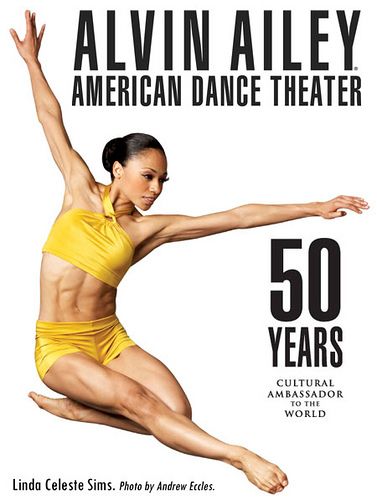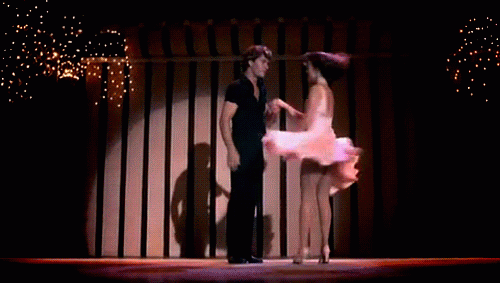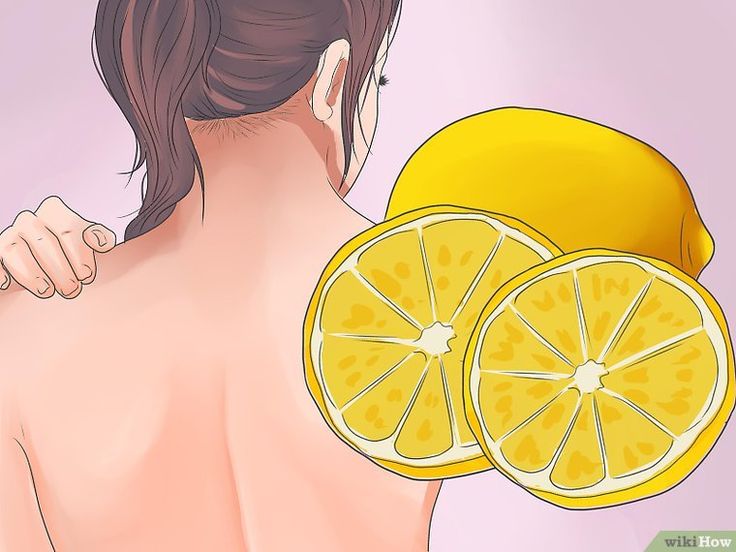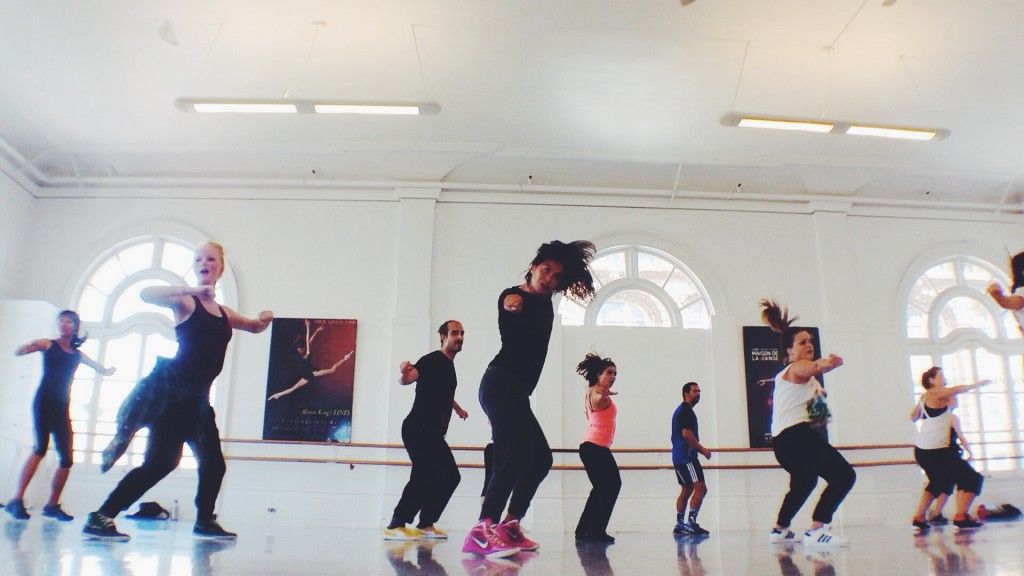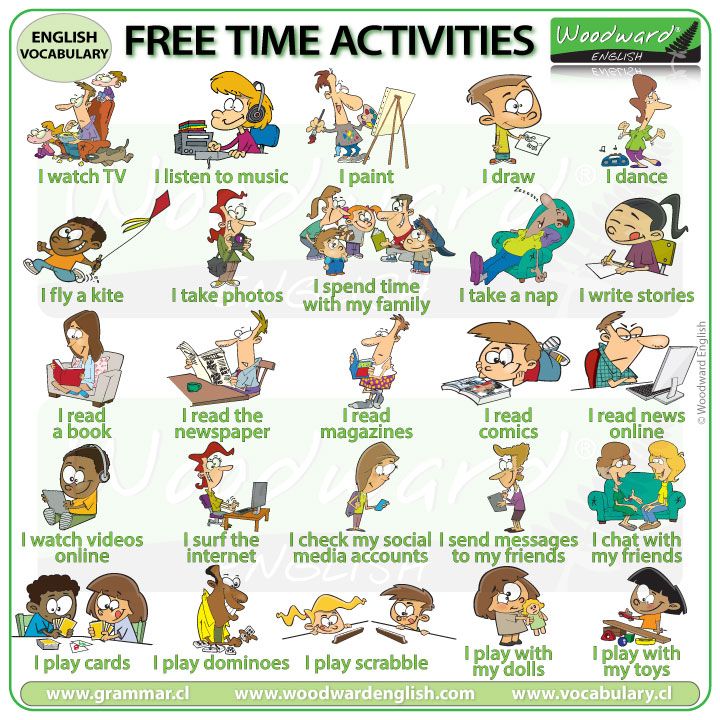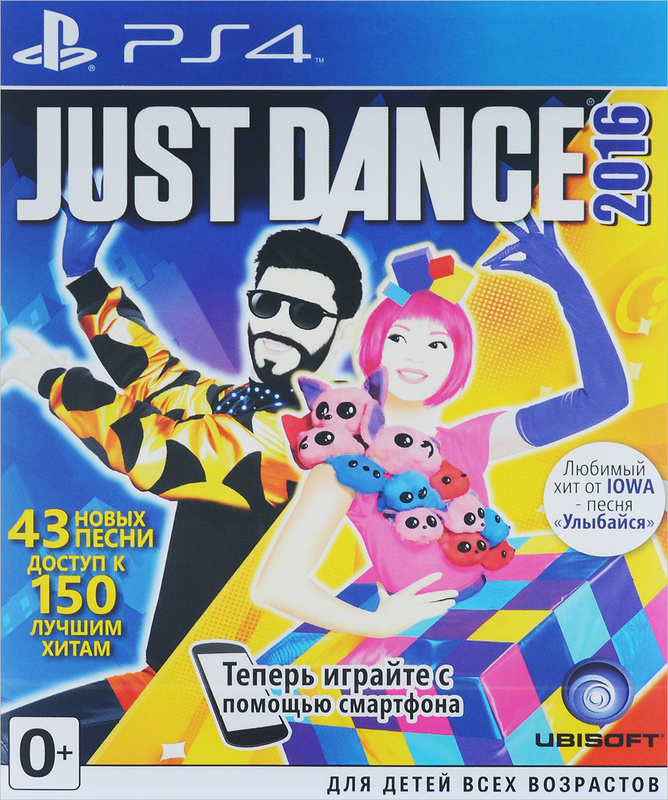How to dance in party
How to Dance at a Club or Party
You probably know people who can dance at a club without a second thought.
They just go out, have a few drinks, get down on the dance floor, and have a great night.
Meanwhile, you're seized by panic and insecurity just thinking about dancing at a club.
And whenever you do drag yourself out, you stay glued to the wall and watch everyone else let loose on the dance floor.
But guess what? Those awkward feels are completely normal. And we PROMISE you can overcome them!
Follow these 5 simple steps and never worry about feeling left out again.
1. Find the beat/rhythm as you make your way towards the dance floor
Don't expect yourself to bust out a Step Up routine out of nowhere as soon as you step foot on the dance floor.
This isn't a movie! Start small – really small – by just bobbing your head to the beat.
Do this before you even get on the dance floor. Think of it this way: Music is the one thing that lubricates the whole experience of being at the club.
It sets the mood as soon as you walk in until the moment you walk out. You have to be comfortable with the music first.
So start interacting with the music right away. You can listen and nod your head a you're holding your drink, hanging with a friend, or even sitting down.
This is an easy way to set yourself up for success on the dance floor before you even start dancing.
Your body will already have a handle on the rhythm, so you're more likely to stay on beat by the time you do get your feet steppin'.
Watch this video to learn how to find and count beats in music:
2. Start with a small bounce / groove
Once you're on, or around, the dance floor, start bouncing with your whole body.
Think of this bounce as a bigger version of your head bob. You're still moving to that same rhythm, but now with your knees, core, and chest.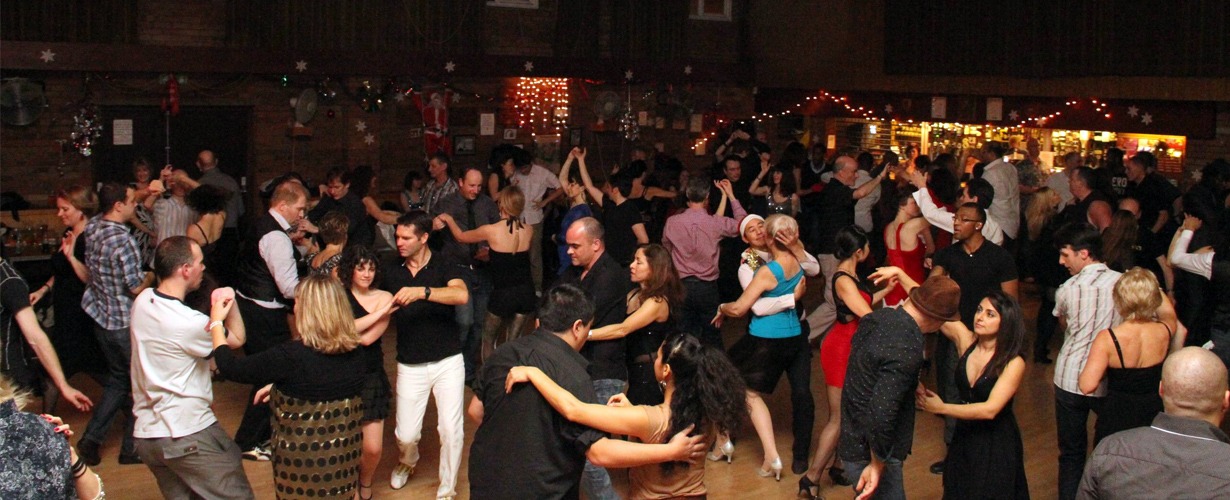
You know how a baby bounces on his knees when he hears a song he likes? Like that, but not as jolt-y.
Ease into those bounces calmly, then slowly build up your energy. This helps make your dancing look more natural.
Carlo Darang describes what a bounce / groove is in this video:
3. Learn simple steps
Got a handle on the music? Great.
Started bouncing with your body? Check. Now, let's get your feet moving!
But wait – you won't know which foot to step where without any practice.
So learn a few basic dance steps before you go to dance at a club.
This video will teach you how to do 3 basic dance moves that work with any song:
Wanna learn more basic party moves like these?
Check out Bianca's "Intro to Dance" program on STEEZY Studio! It'll teach you everything you need to know to get down on the dance floor.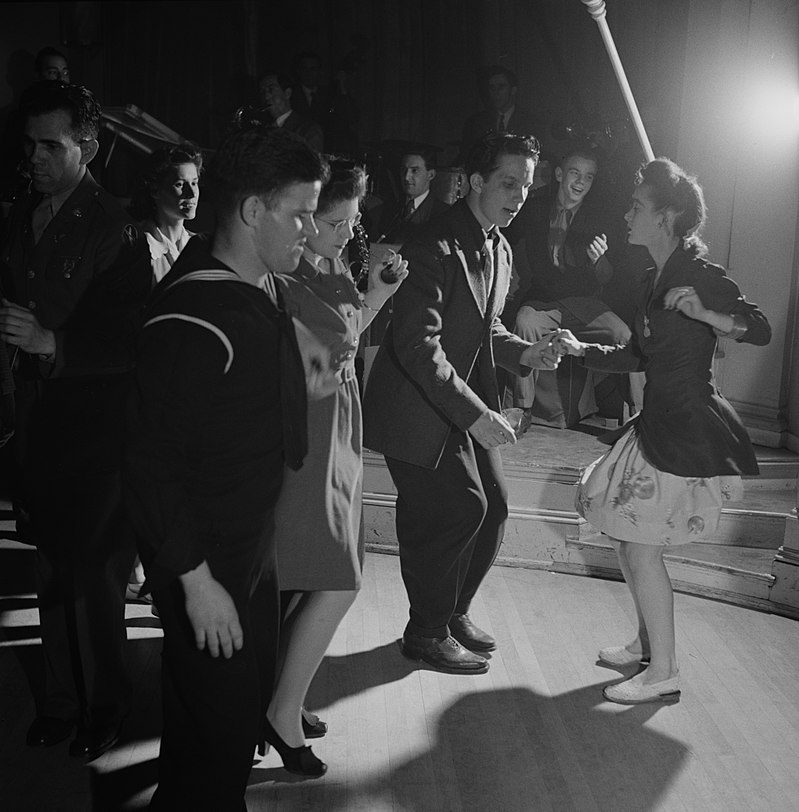
Click here to take the first 4 classes for free.
4. Let loose
Now that you've got the basics of dance down, it's time to put on a few finishing touches to make sure you look comfortable and confident with every move.
These quick tips will help you refine your dancing so you look more loose, groovy, and comfortable:
5. Join the party
By this point, you've got a handle on dancing 1. on beat 2. with your whole body 3. using steps.
But you didn't come to dance at a club to do all this alone!
Once you have that base, dance with the people around you.
If you're in a crowd or a group of friends, then you can play off of their movements and energy.
Mimic the moves your friends are doing, lip sync with them, rap Nicki's entire verse in Motor Sport from memory.
And if the DJ or song lyrics tell you to do something (like put your hands up or jump), then do it!
These are little things you can't predict or practice – remember that you're out to have fun, not to play DDR in your head.
Grinding (or whatever you call it) on someone is its own topic – but whether you're dancing with one person or a whole group of people, the most important thing to do is to... Stay in rhythm!
You and your partner or friends could be doing totally different things. They could be jumping while you're pumping your arms.
She could be swaying side to side as you're 2-stepping.
But as long as you're moving to the same beat, it'll still feel like you're dancing together.
(The closer you physically get, though, the more similar you want your movements to be so that you don't end up hitting each other or creating friction between your moves. Dance with them!)
---
I hope these tips help you kiss those insecurities goodbye!
Follow these 5 steps and you'll realize that it's possible, and actually quite easy, to dance at a club.
You just need the right resources, some practice, and a dash of confidence. ;)
Have fun!
13 Fun Dance Games for Kids' Parties
By
Christine Gauvreau
Christine Gauvreau
Christine Gauvreau is an event planning expert with over 10 years of professional party planning experience.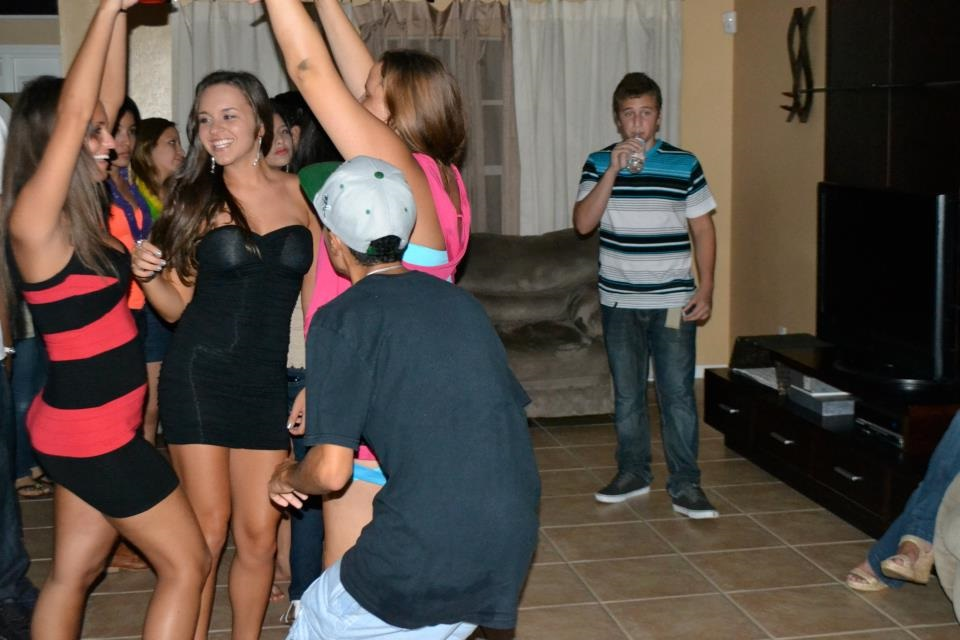 She co-founded an event planning business that specializes in kids' parties. She has written for The Spruce on topics related to children's parties for almost five years.
She co-founded an event planning business that specializes in kids' parties. She has written for The Spruce on topics related to children's parties for almost five years.
Learn more about The Spruce's Editorial Process
Updated on 10/05/22
Whether you’re throwing a disco-themed party, a rock-and-roll sock hop, or just a children's party where you’ll have music and space for dancing, these dance party games are sure to get kids moving and grooving in the spirit of fun. These timeless party ideas and activities make dancing so much fun and they work for all age groups, from 5-year-old kids to adults.
The Spruce
Spot Light
To play this dance party game, you’ll need one person to work the spotlight and another to work the music. Have that person stand in the middle of the dance floor and shine a flashlight on the dancers. The spotlight person should continually move the flashlight so that it is always changing which dancer it is highlighting. Whenever the person in charge of the music stops it, the spotlight holder must freeze, steadying the light on the dancer it was pointing to at the time. That dancer is out of the game. Play continues until only one dancer remains.
That dancer is out of the game. Play continues until only one dancer remains.
Another variation of this game is this: the dancer the light is shined on when the music stops moves to the center of the dance floor and performs their best dance moves for the crowd. This way no one is eliminated from the game and everyone gets a turn to shine in the spotlight.
Memory Moves
To play memory moves, have the kids form a circle around the dance floor. Choose one player to go first. That player will step into the center of the circle and make up a dance move. The next player will step into the center and repeat the same dance move. After that player mimics the first player's dance move, the second player then performs one of their own. It is up to the next player to repeat both dance moves and add a third. The game continues in this manner, with each dancer repeating and then adding a new move to the list. Anyone who can’t copy or forgets the succession of dance moves is out. Play continues until only one dancer remains.
Play continues until only one dancer remains.
Spot Dance
This game will have dancers team up in couples. Each couple must dance only in a designated spot. The best way to do this is to tape large circles onto the floor and have dancers stand on them to start. Play music and have them dance together without stepping off of the circles. When you speed up the music, they must speed up their dance. Anytime a foot steps out of the couple’s spot, that pair is out of the game.
To make this game more challenging, you can start with large circles and replace them with smaller ones as the dancing progresses.
Partner Switch
Assign one player to stand in the middle of the dance floor and hold a flag. Have the remaining dancers form pairs and begin to dance around the flag holder. At random times, the flag holder will toss the flag in the air. When the flag goes up, everyone switches partners. The flag holder must also try to find a partner. The person left standing alone becomes the new flag holder.
Dance Switch
Play music and have the kids dance randomly. Stand alongside the dance floor and randomly call out different dance styles, such as disco, square dance, ballroom, hip-hop, or ballet. Whenever a new dance style is called, players must switch their dance moves to suit that style.
Create a Dance
Forget the macarena or the cha-cha slide. Get kids to invent dance moves. Have them line up as they would for line dancing. One at a time, have a player step forward and perform a move. All dancers will work on that move a few times before the next player will add a move. Each move will be practiced along with the ones that went before. By the time all players have added and rehearsed their moves, the new dance will have been invented.
Dance Hats
Hand out two or three hats to the dancers. As the music plays the hats must circulate among the dancers. Every time the music stops, the players wearing the hats earn a prize. To make sure everyone earns a prize, have the players who win sit out for the remainder of the dance game.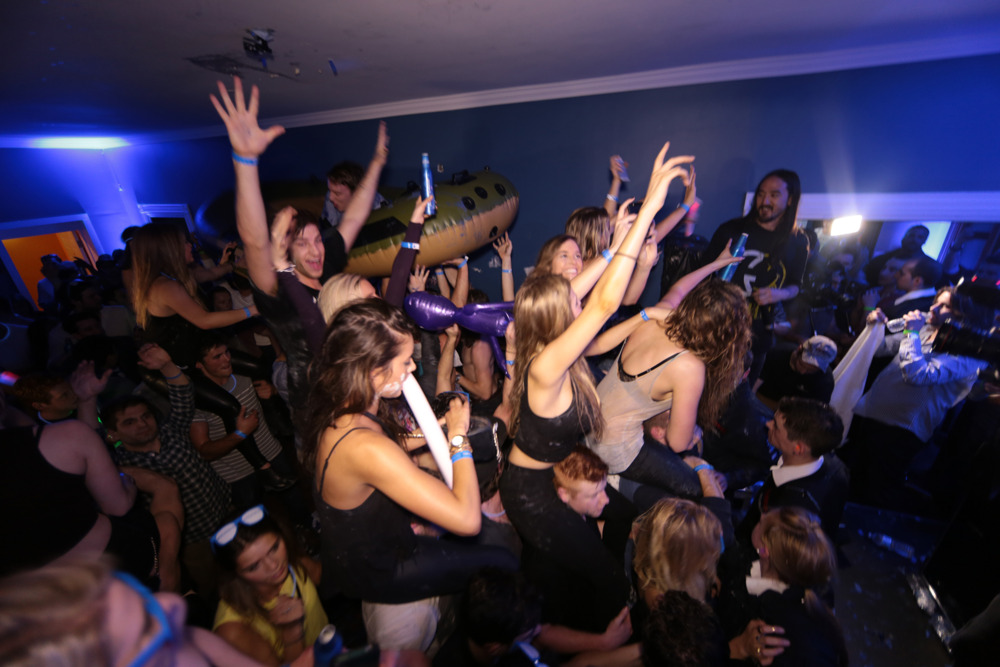
Elimination Dance
Before the party, write down several things that might pertain to party guests such as “the kid with the ponytail” or “the person wearing glasses.” Put all of the written items into a hat. As the kids dance, pull the items from the hat and call them out loud. Anyone who fits the description must leave the dance floor. The last player on the dance floor wins.
Dance Corners
Mark off four corners with four different colors. This can be done by hanging a colored flag or taping a piece of colored paper to the floor in each corner. Write down the four colors and place them in a hat. Once the kids are dancing for a bit, stop the music and tell them to run to a corner. Pull one of the colors out of the hat. Those players are out, and that corner is eliminated from play.
Dance Party Musical Chairs
This version of musical chairs is a great way to incorporate a childhood favorite game into your dance party. Instead of lining the chairs up in the middle of the room, set them up so that they circle (or semi-circle) the dance floor. Kids dance, and when the music stops, they head for the chairs, but instead of running, they must dance their way over to the chairs. As usual, the player left standing when all the chairs are taken is eliminated, a chair is removed, and the kids return to the dance floor for the next round.
Kids dance, and when the music stops, they head for the chairs, but instead of running, they must dance their way over to the chairs. As usual, the player left standing when all the chairs are taken is eliminated, a chair is removed, and the kids return to the dance floor for the next round.
Zumba Dance
Choreograph an easy Zumba dance fitness routine for guests so they can shake it all out and have fun while doing it. Zumba moves to music can be simple like marching a few feet back and forth, jumping side to side, or hopping on one foot for a second or two then switching. Instruct guests to freeze in position when the music stops and eliminate anyone who didn't stop dancing.
Musical Island Dance
Before the party, prepare a bunch of "islands" made of paper or other mats labeled "Zombie Island," "Robot Island," "Disco Island," or any other type of dance theme you'd like. Place the islands around a large space and make them far apart. There are variations to this game but however you play it, guests need to jump onto an island or be disqualified from the game. Here are two ways to play the game:
Here are two ways to play the game:
- Play music while guests are dancing away from the islands. When the music stops, guests have to get to an island. Anyone who is not on an island is taken out of the game.
- Play the game the opposite way and have guests stay frozen off the islands until the music begins to play. Then guests will need to jump onto the island nearest them and begin to dance like zombies, robots, disco dancers, or whatever other island theme you have planned. Any guest that did not make it to an island on time is eliminated.
As a variation for either way the game is played, you can remove an island after each round so guests have fewer places to jump on to.
Dancing With the Ball
This is an ideal game for squiggly party guests. You'll need a ball or a balloon and the more sparkly it is, the better. Everyone stands in a circle and when the music begins, guests start dancing at the same time the ball or balloon is being passed around from person to person. But it's harder than it sounds because guests pass the ball around the circle without using arms or legs and they still need to be dancing. Whoever drops the ball is out of the circle and the remaining guest is the winner.
But it's harder than it sounds because guests pass the ball around the circle without using arms or legs and they still need to be dancing. Whoever drops the ball is out of the circle and the remaining guest is the winner.
How to dance at a party: advice from British GQ editor-in-chief Dylan Jones
The main thing to remember when throwing yourself on the dance floor: no one is looking at you. Do not be afraid that you will be laughed at and that everyone is just waiting for you to get tangled in your own feet. Believe me, no one is interested in this, especially if you behave decently.
In the event that your dancing experience is zero - or if you once tried and did not like it - you need to learn two simple truths first. Firstly, women like it when a man dances well, so if you are a complete layman in this matter, you should strain yourself. Secondly, no one expects great things from you in all your endeavors. Personally, I am able to dance to anything, but when a DJ puts on I'm So Excited by The Pointer Sisters or something in the style of drum and bass, I immediately leave the dance floor. Not because I don't like such compositions - although at my age it would be forgivable - but because they are difficult to dance to. Not everyone can rock to any song, so if it has too many beats per minute, or a particularly jagged rhythm, or is too slow (like Just Be Good to Me by the SOS Band), feel free to go to the bar. Don't like reggae? Run to the toilet. Can't help laughing at the new Coldplay hit? Sit down.
Not because I don't like such compositions - although at my age it would be forgivable - but because they are difficult to dance to. Not everyone can rock to any song, so if it has too many beats per minute, or a particularly jagged rhythm, or is too slow (like Just Be Good to Me by the SOS Band), feel free to go to the bar. Don't like reggae? Run to the toilet. Can't help laughing at the new Coldplay hit? Sit down.
If you don't know how to dance at all, but circumstances require it, move by feel. Do not kick your legs - work with your body; bending your elbows, squirm with dignity to the beat of the music. It's really easy! Soon you will become bolder and begin to vary your dance moves; do it in proportion. No one expects you to turn into John Travolta - all his exploits in "Saturday Night Fever" were staged by a professional choreographer, so you should not go out of your way.
A few more important points. Don't slow dance unless you're holding a woman in your arms. Don't try to act like Bruce Springsteen from the Dancing in the Dark video or Kevin Bacon from the movie Loose and dance like a rocker, throwing out your arms and legs at the same time, like a drunken doll.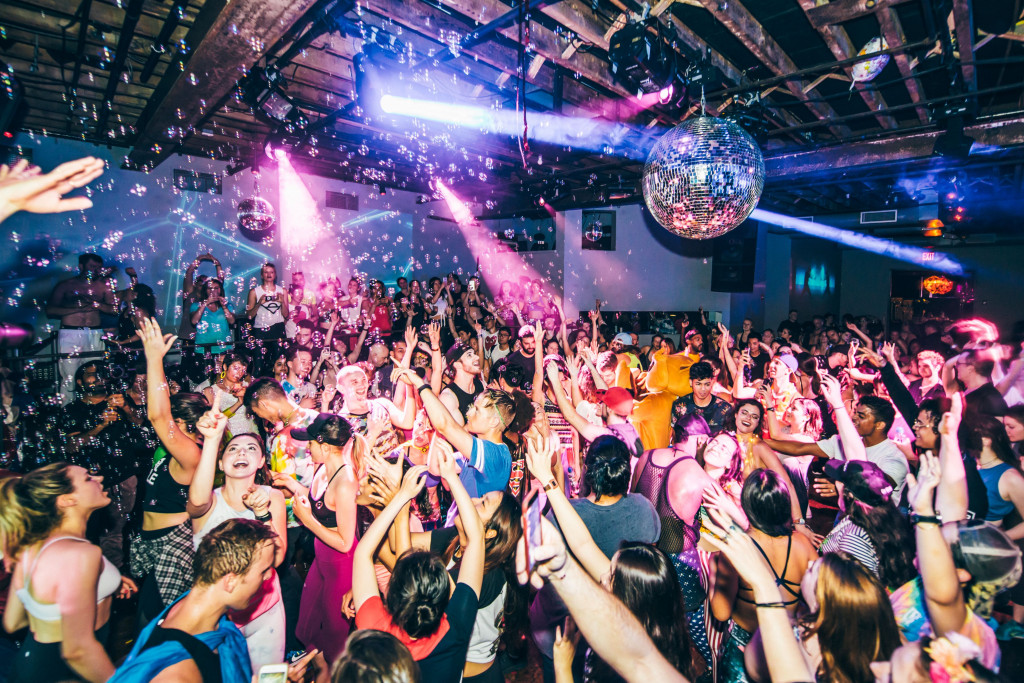 It would also be nice to learn some traditional dance - for example, tango. The easiest way to learn is the twist, which can be danced to anything from Chubby Checker to George Michael's Faith. Put your foot slightly in front of you and start spinning on it, wobbling your hips; then “screw” yourself into the floor without bending your back, and then “unscrew” back up in the same way.
It would also be nice to learn some traditional dance - for example, tango. The easiest way to learn is the twist, which can be danced to anything from Chubby Checker to George Michael's Faith. Put your foot slightly in front of you and start spinning on it, wobbling your hips; then “screw” yourself into the floor without bending your back, and then “unscrew” back up in the same way.
If you want to learn something spectacular, try the Highland Fling, one of the oldest Scottish dances. Raise your left hand and use it to draw the letter "c" above your head. Place your right hand on your thigh so that the thumb is pointing down and the other fingers are pointing back. With the emphasis on the left leg, stretch the right leg all the way and make a quarter-turn jump. Place your right foot behind the ankle of your left and again jump in a quarter turn, stretching your right leg as far as possible to the right side. Then do another quarter-turn jump, keeping your right foot in front of your left ankle (toes pointing to the floor).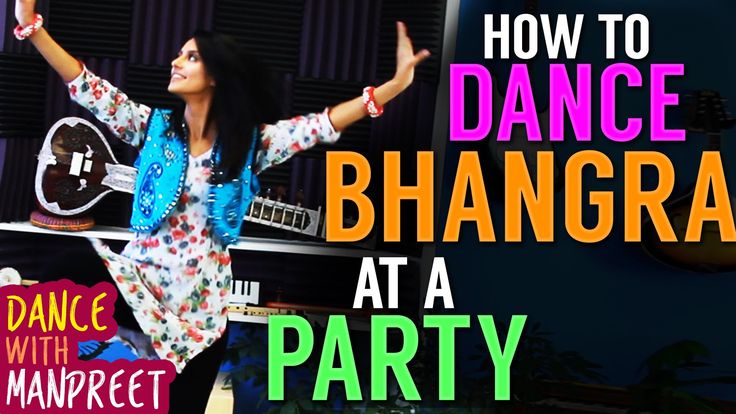 Repeat the movement, changing the right leg to the left and vice versa.
Repeat the movement, changing the right leg to the left and vice versa.
When the song ends, bow gracefully with a George Clooney grin. And remember: courage and recklessness are not the same thing.
Photo: Mr Jones' Rules for the Modern Man © 2006 Dylan Jones. Published with permission from Hodder & Stoughton. Illustration: Mitt Roshin
Do you check your mail often? Let there be something interesting from us.
12 life hacks to quickly learn how to dance from Mamita Dance
dancing
Author: Pavel Sobiray
psychologist, salsa and tango teacher
dancing
Author: Pavel Sobiray
psychologist, salsa and tango teacher
At the start, you always want to get a quick result. When it doesn't happen, the hypothesis arises that everything takes time. After a conditionally acceptable time, humility comes to mastering pair dances, which, perhaps, is not given, and I will just do what I learned somehow.
This is the most common story of those who believe that the mere act of attending a pair dance class is enough to learn how to dance.
Absolutely not. If you want to really dance well, you have to make an effort outside of the dance class. A good teacher will definitely be needed, but the initiative should be on your side.
1. Listen to music
The most common and accessible advice that is given already in the first lessons. And it definitely works. Music creates a certain atmosphere of the dance and intuitively you want to move to it. It doesn't matter where you listen to music - in the car, on headphones while walking or doing household chores.
An addition that will help you dance better is your active participation in the music. Sing along, dance or simply beat musical accents with any free parts of the body. In the subway, for example, it is enough to tap out bright moments with your fingers, in the car to sing along with sounds, and at home you can jump for pleasure.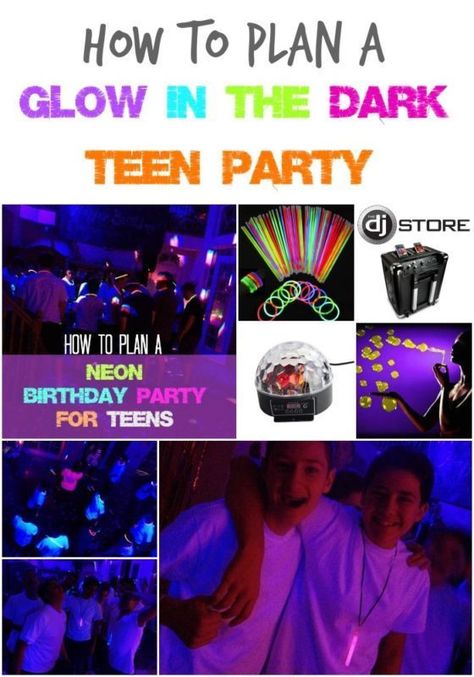
2. Watch videos of good dancers
It's complicated, but also obvious. It’s more difficult, because without recommendations from more experienced dancers, unfortunately, it’s not so easy to find a good quality video on the net (I mean not the resolution quality, but the content itself).
Meaningful video viewing is about building an understanding of HOW dancers make a particular impression on a partner or viewer. Technology is at the heart of everything. Understanding how the pros do it is a big step forward.
It is important to distinguish a show from a disco dance, a staged performance from an improvisation, a stylized dance from an authentic one, etc. Ask for recommendations and dance teachers will always throw off a couple of videos of worthy landmarks.
Tango Z. Showreel.
Online modern tango courses
Tango nuevo is the most advanced version of tango. We can quickly learn to dance from zero to a steep level.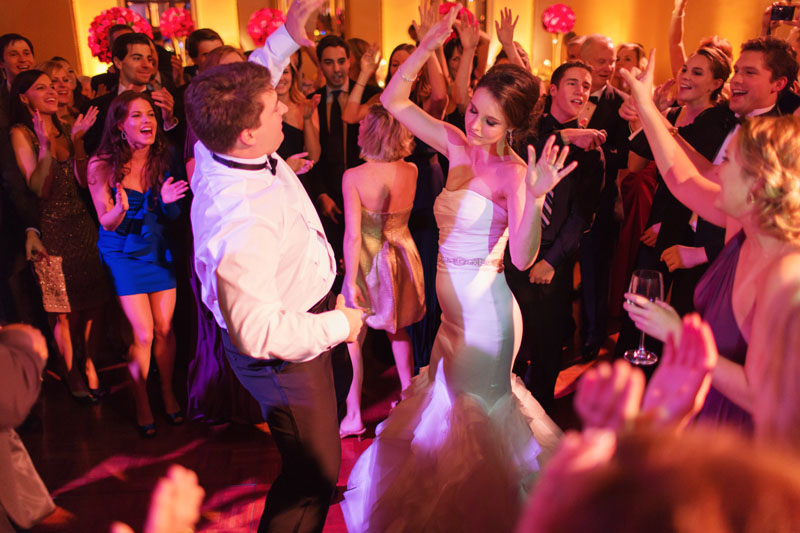
| View details |
3. Dance in salsatecas/milongas/discotheques
A very delicate moment when you should come to the first party. From a technical point of view, most students in 1-3 months have a sufficient set of figures and techniques to come and dance calmly. Psychologically, the same moment can be stretched out for an indefinite time. After all, it is imperative to “not lose face”, “learn more figures” and be sure what to do in case “there is an unfamiliar movement”.
In fact, the partygoers don't really care (except for a small layer of non-professional teachers who want to help inexperienced dancers by treating them as customers in the future). It is important to come and try dancing after a month of classes. You can only with friends or guys from your group. This will be enough to feel the adrenaline and inspiration from the dance.
4. Dance with partners or partners not of your level
The conventional wisdom that you need to practice in groups of your level does not withstand the test of experience.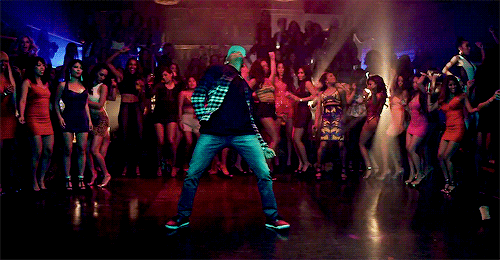 Perhaps now your eyes widened in surprise, and you want to meaningfully read the phrase again. Yes, you saw everything correctly: when you dance with a partner of your level, you don’t grow anywhere.
Perhaps now your eyes widened in surprise, and you want to meaningfully read the phrase again. Yes, you saw everything correctly: when you dance with a partner of your level, you don’t grow anywhere.
It's important to understand that not only does it work one way and you have to dance with cooler dancers, but it works even more effectively the other way. It is no coincidence that teaching pair dances dramatically raises the level of the teacher himself. You have an endless stream of very beginner dancers.
How it works. A more experienced partner needs to be "stretched". It's easy and obvious. With beginners, you need to take more initiative on yourself, see the general pattern of the dance more widely, turn on and insure more, try to be an example and be more careful. The quality of interaction begins to grow significantly. And wonderful partners too.
Dancing with partners of your level doesn't make you grow. Dance with beginners and more advanced dancers
Dominican Bachata Women's Style Online Course
Want to learn how to hypnotize those around you with the most appetizing part of your body? On the course we will tell you all the secrets.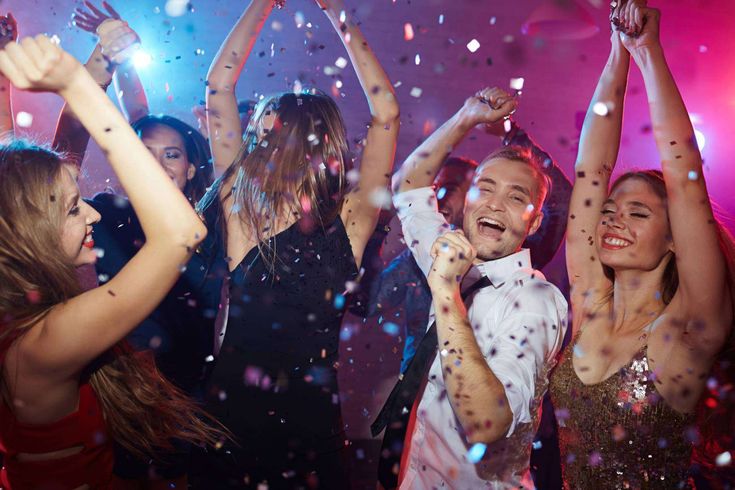
| Interesting |
5. Learn to dance for a partner and for a partner
Turks and Argentines are one of the best partners in the world. In Russia, partners are highly valued. Why? The answer is simple. In Argentina and Turkey, it is not questionable for men to ask another man to lead in one piece or another and give feedback on the quality of the lead. For them, it will be a great shame to hear moralizing from a partner, or even more so to be known in the community as an insecure partner.
In Russia, due to the constant, often far-fetched, opinion that there are more women in pair dances, partners calmly get up and study their partner's part. Such partners then grow into very cool dancers and teachers. In no case do this at parties, only in class. Here we are talking only about the learning strategy. At parties, be yourself.
6. Do not memorize the links
Always try to look deeper and understand the through principle and idea of movement. Understanding what and how is done will make it possible to independently generate any sequences and chips.
Understanding what and how is done will make it possible to independently generate any sequences and chips.
Human memory is limited and there will always be a moment when something will escape and your repertoire will be limited by the size of RAM.
In Argentine tango, for example, there are seven levels of movement construction that, when mastered, will allow you to make millions of combinations. And how many dance sequences can you really remember? In rueda, more than 150 figures dance in a rare circle. It's hard to keep more in mind.
7. Develop your body
Many years of experience in teaching couple dance shows that as soon as everyone pairs up in a class, any progress in individual style ends. But it is the individual style that distinguishes everyone at the disco: partners change, and style is always with you.
The body as the main instrument of dance must be very plastic, responsive and emotional. Surprisingly, not all pair dance schools have a general physical warm-up. It is vital to tune the body and understand how it works.
You can always train extra and concentrate more on the basic steps, as their true value is as body work. The sequence of steps is, in fact, the simplest thing that can be in pair dancing. The quality of individual performance determines the craftsmanship.
8. Try on the images of inspiring dancers
A psychological life hack for those who have already mastered the steps, but still feel that there is not enough brightness and drive. Most are terribly afraid of being someone else's "clone". Here the action is the same as under the influence of hypnosis - the more you resist, the more you plunge into an altered state of consciousness.
With a high degree of probability, you are already dancing like someone else's "clone". A meaningful fitting of someone else's image is that you mentally take the image of the one who inspires you (inspiration is critical in this case) and "put on" yourself. Then you start dancing and trying to feel in general how it is to be able, for example, to be the best partner or the sexiest partner in a disco. This is much more difficult than it seems. But it works extremely efficiently.
Then you start dancing and trying to feel in general how it is to be able, for example, to be the best partner or the sexiest partner in a disco. This is much more difficult than it seems. But it works extremely efficiently.
9. Dance to offbeat music
Habitual rhythms keep you tight. Tango salon or speedy timba leave little room for experimentation and fantasy. Pattern dancing is always noticeable and is reserved for beginners.
The truly new is born outside of the usual. Look for places to experiment. If there is no place, organize self-training. The main thing is not to get carried away, because music determines the style. We bring something new to pair dances, rather than trying to change them.
Search, improvise, don’t be afraid to go beyond, develop in different directions, be inspired by music atypical for style
10. Try your hand at basic dance directions
dances exist according to their own non-choreographic laws.
This is the deepest delusion, which has turned into a ceiling for the qualitative development of partner dances. After all, all professional dancers, for example, in salsa or bachata, build their ideas on the basic choreographic principles.
Do not think that choreography is only applicable on stage. Any meaningful movement of the body can be choreographic. In general, try classical or modern choreography. Basically, hip-hop can work too.
11. Look for battle sensations
Pair dances return us to an active position of manifestation of our body. As in the days of our ancient ancestors, we impress the members of the opposite sex by how dexterous, hardy, sexy, etc. we are. Modern laws of the jungle in the entourage of big cities.
If you look around the dance floor, it becomes clear that the majority are clearly herbivores (not in the sense of vegetarians, but in relation to those around them).:no_upscale()/cdn.vox-cdn.com/uploads/chorus_asset/file/3046258/2014_01_305-fitness-1.0.jpg) I am sure that predators are always more interesting in terms of the attractiveness of the image - try to find a counterbalance among herbivores, for example, a cat woman or a lion man.
I am sure that predators are always more interesting in terms of the attractiveness of the image - try to find a counterbalance among herbivores, for example, a cat woman or a lion man.
The conversation is about an internal position, not about aggressiveness. Lability and lack of control are inherent in adolescents, and not in adult self-sufficient people.
Accordingly, even a training or friendly battle gives, on the one hand, practical skills - to make a bright sequence of movements, bring an idea to a climax, show a spectacular feature, on the other hand, develops the psychological basis of the dance - self-confidence, resistance to extraneous attention, self-control and self-control in complex elements.
12. Communicate with professionals
The environment shapes the internal position. Basically, real passionaries of the dance community are ready to openly talk, discuss and support the development of dance in every possible way. Universal principles and the ideas they articulate have a much longer and more practical perspective than meets the eye.
Universal principles and the ideas they articulate have a much longer and more practical perspective than meets the eye.
Accept that, for example, behind the words "listen to your partner" is not only a beautiful metaphor, but also a practical skill to literally listen to your partner. At the same time, always treat every thought, even the most respected teacher, as a private opinion.
Your skill will lie in finding the scope of the idea even in conflicting opinions. Most often, the contradiction is speculative and the truth lies in the angle of perception or situationality.
Your dancing growth will stop sooner or later. This can happen at the level of three basic steps or years of experience in teaching and show performances. Regardless of your level, the suggested 12 life hacks can get you off the ground and greatly accelerate your dance growth. There is no way here without your motivation and activity. Take your dance development into your own hands.
share an article with friends
| Salsa |
| BACHATA |
Lessons of Argentine tango in Moscow - dance school of Mamita
School of Sals Dangerous sexuality
Salsa: destroyers of stereotypes
Couple dancing as a source of strength.



